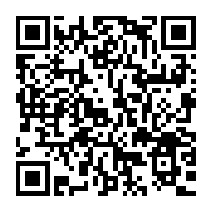HEART SUTRA (in Mandarin)- Heart of the Prajna-Paramita
Heart of the Prajna-Paramita Sutra, also called Heart Sutra, is the shortest and the most popular sutra in Buddhism. The Heart Sutra is regarded as the summation of the wisdom of Buddha. It explains perfectly the teaching of non-attachment, which is basically the doctrine of emptiness.
Eliminate Stress - Peace of Mind -
The benefits of reciting the Compassion Buddha mantra are infinite, like the limitless sky
It looks very simple, very easy to recite. But if you think of the benefits, it's not at all simple. Here, I'd to mention just the essence of its infinite benefits.
The Heart Sūtra, it is generally thought, is likely to have been composed in the 1st century CE in Kushan Empire territory, by a Sarvastivadin or ex-Sarvastivadin monk.[12] The earliest record of a copy of the sūtra is a 200-250CE Chinese version attributed to the Yuezhi monk Zhi Qian.[2] It was supposedly translated again by Kumarajiva around 400CE, although John McRae and Jan Nattier have argued that this translation was created by someone else, much later, based on Kumarajiva's Large Sūtra.[13] Zhi Qian's version, if it ever existed, was lost before the time of Xuanzang, who produced his own version in 649CE, which closely matches the one attributed to Kumarajiva.[14] Xuanzang's version is the first record of the title "Heart Sūtra" (心經 xīnjīng) being used for the text,[15] and Fukui Fumimasa has argued that xinjing actually means dharani scripture.[16][17] According to Huili's biography, Xuanzang learned the sutra from an inhabitant of Sichuan, and subsequently chanted it during times of danger in his journey to the West.[18]
Avalokitesvara Bodhisattva
when practicing deeply the Prajna Paramita
perceives that all five skandhas are empty
and is saved from all suffering and distress.
Shariputra,
form does not differ from emptiness,
emptiness does not differ from form.
That which is form is emptiness,
that which is emptiness form.
The same is true of feelings,
perceptions, impulses, consciousness.
Shariputra,
all dharmas are marked with emptiness;
they do not appear or disappear,
are not tainted or pure,
do not increase or decrease.
Therefore, in emptiness no form, no feelings,
perceptions, impulses, consciousness.
No eyes, no ears, no nose, no tongue, no body, no mind;
no color, no sound, no smell, no taste, no touch,
no object of mind;
no realm of eyes
and so forth until no realm of mind consciousness.
No ignorance and also no extinction of it,
and so forth until no old age and death
and also no extinction of them.
No suffering, no origination,
no stopping, no path, no cognition,
also no attainment with nothing to attain.
The Bodhisattva depends on Prajna Paramita
and the mind is no hindrance;
without any hindrance no fears exist.
Far apart from every perverted view one dwells in Nirvana.
Eliminate Stress - Peace of Mind -
The benefits of reciting the Compassion Buddha mantra are infinite, like the limitless sky
It looks very simple, very easy to recite. But if you think of the benefits, it's not at all simple. Here, I'd to mention just the essence of its infinite benefits.
The Heart Sūtra, it is generally thought, is likely to have been composed in the 1st century CE in Kushan Empire territory, by a Sarvastivadin or ex-Sarvastivadin monk.[12] The earliest record of a copy of the sūtra is a 200-250CE Chinese version attributed to the Yuezhi monk Zhi Qian.[2] It was supposedly translated again by Kumarajiva around 400CE, although John McRae and Jan Nattier have argued that this translation was created by someone else, much later, based on Kumarajiva's Large Sūtra.[13] Zhi Qian's version, if it ever existed, was lost before the time of Xuanzang, who produced his own version in 649CE, which closely matches the one attributed to Kumarajiva.[14] Xuanzang's version is the first record of the title "Heart Sūtra" (心經 xīnjīng) being used for the text,[15] and Fukui Fumimasa has argued that xinjing actually means dharani scripture.[16][17] According to Huili's biography, Xuanzang learned the sutra from an inhabitant of Sichuan, and subsequently chanted it during times of danger in his journey to the West.[18]
Avalokitesvara Bodhisattva
when practicing deeply the Prajna Paramita
perceives that all five skandhas are empty
and is saved from all suffering and distress.
Shariputra,
form does not differ from emptiness,
emptiness does not differ from form.
That which is form is emptiness,
that which is emptiness form.
The same is true of feelings,
perceptions, impulses, consciousness.
Shariputra,
all dharmas are marked with emptiness;
they do not appear or disappear,
are not tainted or pure,
do not increase or decrease.
Therefore, in emptiness no form, no feelings,
perceptions, impulses, consciousness.
No eyes, no ears, no nose, no tongue, no body, no mind;
no color, no sound, no smell, no taste, no touch,
no object of mind;
no realm of eyes
and so forth until no realm of mind consciousness.
No ignorance and also no extinction of it,
and so forth until no old age and death
and also no extinction of them.
No suffering, no origination,
no stopping, no path, no cognition,
also no attainment with nothing to attain.
The Bodhisattva depends on Prajna Paramita
and the mind is no hindrance;
without any hindrance no fears exist.
Far apart from every perverted view one dwells in Nirvana.
- Category
- Mantra - Trì Tụng Mật Chú







